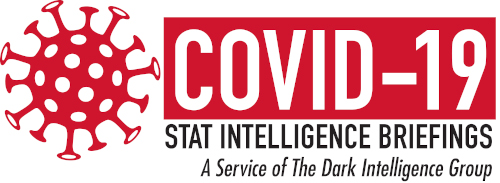New research indicates that tracking SARS-CoV-2 mutations could offer a potential contact tracing tool.
The global COVID-19 pandemic has led to an unprecedented response by the clinical laboratory community and public health officials. One area of innovation and research has been the development of contact tracing technologies and techniques that have never before been implemented.
Contact tracing can be used to help prevent the spread of infections such as COVID-19 by identifying people who have been exposed to someone with the infection. By tracing who has come in contact with a COVID-19 positive individual, public health entities can better control disease outbreaks. While reduced spread of the disease is one component of contact tracing, another important application is the ability to monitor the spread and epidemiological patterns of disease outbreaks.
A new application of genomic technologies that involves virus genome sequencing can help to augment COVID-19 contact tracing, Joel Lefferts, PhD, HCLD, DABCC, told the COVID-19 STAT Intelligence Briefings Service. Lefferts is Associate Professor of Pathology and Laboratory Medicine at Geisel School of Medicine at Dartmouth and is the Assistant Director of Clinical Genomics and Advanced Technology (CGAT) at Dartmouth-Hitchcock Medical Center (DHMC).

For the COVID-19 STAT Intelligence Briefings Service, Joel Lefferts, PhD, HCLD, DABCC, discussed the value of virus genome sequencing in broad SARS-CoV-2 (COVID-19) research and as a complement to contact tracing. (Photo used with permission.)
“One of the things that we’re discussing within the lab is what the utility of the sequencing [SARS-CoV-2] might be as far as something that could complement our clinical diagnostic testing,” Lefferts told STAT COVID-19. “The main value in sequencing is more from an epidemiological perspective to see how the virus changes over time and how different mutations or clades are present in different populations.”
Cohort Tracing Reveals SARS-CoV-2 May Be Actively Mutating During Transmission
“We’ve been looking at the feasibility of tracing transmission in some cohorts using sequencing data,” Lefferts explained. “It would be helpful to know for a variety of reasons if a patient or healthcare provider becomes infected, did they get the virus from patient A or patient B, or maybe it was from a co-worker who was found to be positive—or were all of these infections unrelated?”
Lefferts explained that the DHMC clinical laboratory has been able to achieve some degree of contact tracing through analysis of SARS-CoV-2 mutation variants.
“We’ve sequenced viruses from different individuals and looked at the similarity between the sequences to help inform us as to how that transmission happened and what we might be able to do better in the future to avoid transmission,” Lefferts explained. “In some cases we’ve been pretty sure a transmission occurred from say, individual A to individual B, but there are some slight changes that we’re seeing in the virus from one person to another, and even within an individual we can see some low-level variants that are showing up, suggesting that the virus is actively mutating during the course of an infection and between one transmission and another.”
Tracking SARS-CoV-2 Mutations Alongside Contact Tracing
While tracking SARS-CoV-2 variants may augment contact tracing, there are still some important questions that need to be addressed. “The one thing we need to understand more is how closely related do the sequences have to be to imply transmission?” Lefferts said. “There are two factors there—how similar are the sequences from individual A to individual B, but assuming they are similar, how unique are they within the population? If we see a unique sequence, and we’re not really seeing it anywhere else, but we’re seeing it in two individuals who have been in contact with each other, we can use this as additional evidence that transmission occurred between these individuals.”
SARS-CoV-2 Virus Genome Sequencing Outlook
Sequencing multiple SARS-CoV-2 genomes would not be a realistic undertaking for many clinical laboratories; however, the promising data that can be obtained from identifying variants of the virus may lead to wider applications in the future.
“I think we’re a little bit unique in our sequencing capabilities, but right now we’re just trying to get the assay up and running so that we can offer it on a more routine basis,” Lefferts said. “Hopefully we’ll be able to use some of that information to initiate more routine contact tracing, and collaborate with our state public health lab on broader research.”
Virus genome sequencing and genetic characterization as a new and innovative approach to contact tracing is still in its infancy, but clinical laboratory leaders should be aware of this new application of testing technology.
While genomic analysis of SARS-CoV-2 variants is still far from being a widely implementable COVID-19 contact tracing tool, the rapid state of technological advances addressing pandemic-related needs may make this a feasible tool in the future.

—By Caleb Williams, Editor, COVID-19 STAT






